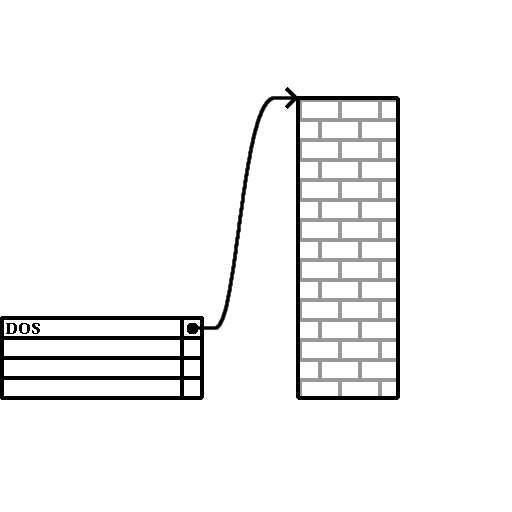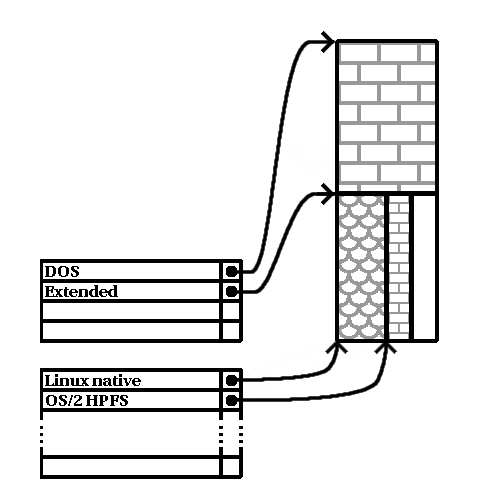

Appendix E. An Introduction to Disk Partitions
109
Table E 1. Partition Types
By this point, you might be wondering how all this additional complexity is normally used. See Figure
E 6, for an example.
Figure E 6. Disk Drive With Single Partition
In many cases, there is only a single partition spanning the entire disk, essentially duplicating the
method used before partitions. The partition table has only one entry used, and it points to the start of
the partition.
We have labeled this partition as being of the "DOS" type. Although it is only one of several pos
sible partition types listed in Table E 1, it is adequate for the purposes of this discussion. This is a
typical partition layout for most newly purchased computers with a consumer version of Microsoft
Windows preinstalled.
E.1.3. Partitions within Partitions An Overview of Extended Partitions
Of course, over time it became obvious that four partitions would not be enough. As disk drives
continued to grow, it became more and more likely that a person could configure four reasonably
sized partitions and still have disk space left over. There needed to be some way of creating more
partitions.
Enter the extended partition. As you may have noticed in Table E 1, there is an "Extended" partition
type. It is this partition type that is at the heart of extended partitions.
When a partition is created and its type is set to "Extended," an extended partition table is created. In
essence, the extended partition is like a disk drive in its own right it has a partition table that points
to one or more partitions (now called logical partitions, as opposed to the four primary partitions)
contained entirely within the extended partition itself. Figure E 7, shows a disk drive with one primary
partition and one extended partition containing two logical partitions (along with some unpartitioned
free space).
Figure E 7. Disk Drive With Extended Partition
As this figure implies, there is a difference between primary and logical partitions there can only
be four primary partitions, but there is no fixed limit to the number of logical partitions that can exist.
footer
Our partners:
PHP: Hypertext Preprocessor Best Web Hosting
Java Web Hosting
Inexpensive Web Hosting
Jsp Web Hosting
Cheapest Web Hosting
Jsp Hosting
Cheap Hosting
Visionwebhosting.net Business web hosting division of Web
Design Plus. All rights reserved


